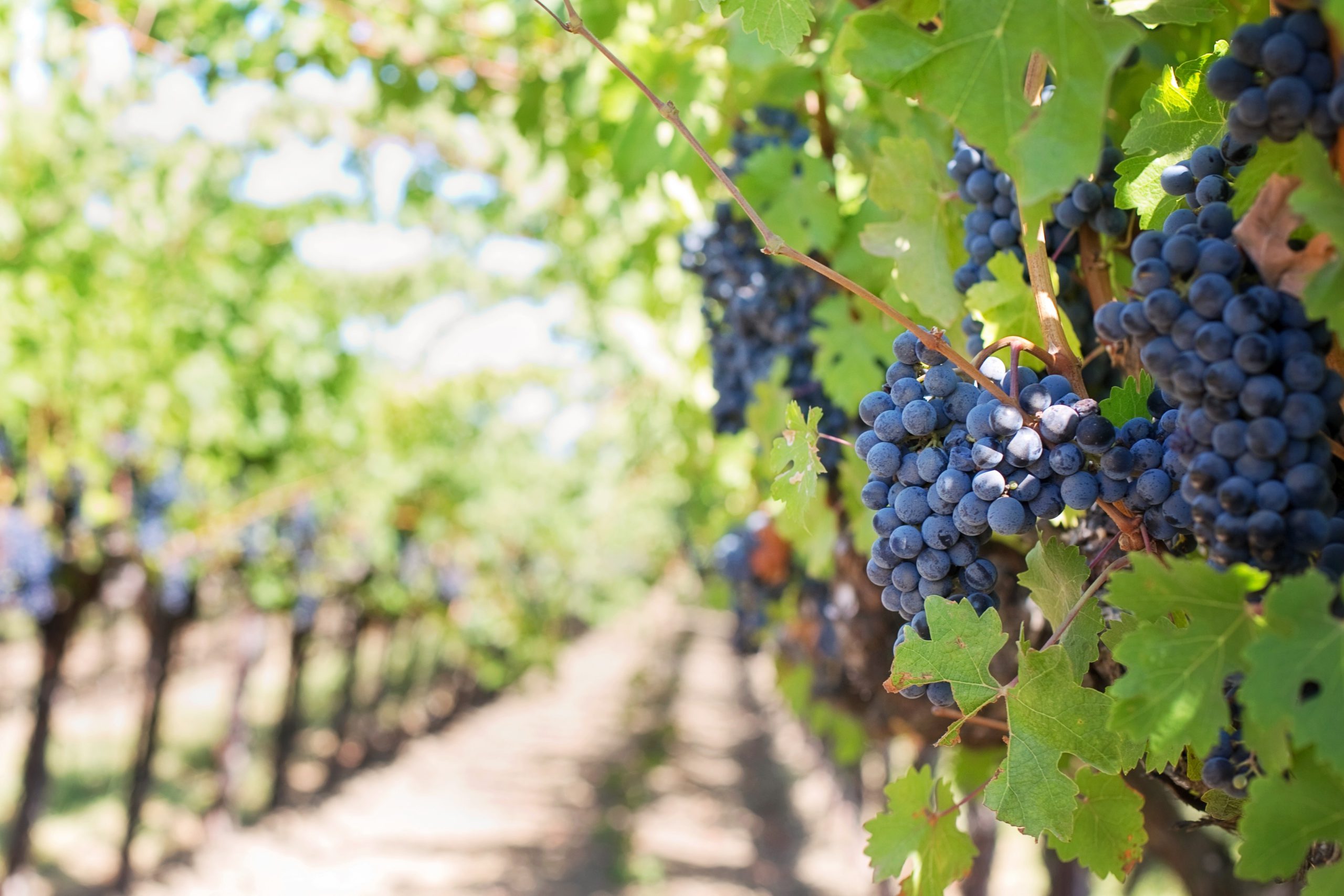Climate change spurs Missouri grape growers to find heartier breeds

Climate change presents many threats to Missouri’s vineyards, a $3.2 billion industry. Among them are rising temperatures, funguses and pests that threaten the yield and long term health of popular grape vines.
Missouri’s growing season has slightly expanded, trending towards earlier rises in spring temperatures, and a later onset of winter freezes. But this can mean trouble if the temperatures in early October are too warm.
Harper Smith, a researcher with the University of Missouri’s Grape and Wine Institute, said high temperatures during harvest-time have been a burden for vineyards across the state.
When the air temperature is hot, vineyard workers have to harvest at night to prevent grapes from fermenting in their totes, Smith explained. Equipped with bright lights, the workers start after dusk., working through the night to harvest and transport the grapes to cooler conditions for storage and processing.
Higher temperatures can also change the chemical composition of the grapes, altering their flavor profile and limiting the wines that can be made from them.
While Patrick Guinan, a climatologist for the University of Missouri Extension, noted cooler than average temperatures in October 2020, recent Octobers have begun with unusually high temperatures.
October 2019 began with temperatures in the 80s and 90s, and Guinan also noted “anomalous warmth” at the start of October 2018 and October 2017.
Guinan cited the Fourth National Climate Assessment in noting that these temperatures are projected to continue rising year round, creating insect and fungal growth issues typically abated by harsh winters.
Grape farmers contend with ever-changing funguses Smith said halt the energy absorption of leaves on their crops, stunting yields and possibly killing the vines. Because grape vines are a perennial crop that don’t produce fruit for the first few years of their development, fungal infections can be devastating for farmers.
“It’s a significant financial investment,” Smith said, “when you have things that hurt your vines, it’s not as simple as ‘next year we’ll have a good crop again.’”
Although many funguses prefer moist conditions, Smith explained that powdery mildew actually prefers long periods of dry, hot temperatures.
Powdery or downy mildew grows on leaves, eventually killing them with such frequency that most farmers use fungicides, Smith said, noting that many farmers also choose to add insecticides due to japanese beetle concerns. The invasive insects congregate on vines and eat away leaves until the plant is “skeletonized,” devastating entire fields. However, recent research has shown “pheromone traps,” that lure the beetles into an inescapable trash bin are effective at reducing crop damage without targeting other insects, unlike pesticides.
Smith said the entomology community is also concerned about the sap-sucking Spotted Lanternfly, an invasive species new to the United States, spreading in the Northeast. Smith said the lanternfly tends to exacerbate mildew concerns, because they constantly excrete honeydew, which happens to attract other insects and pests.
Grape growers are also concerned with age-old dilemmas. This year, late frosts struck vineyards across the state by killing off the first buds on some of the region’s grape vines.
Temperatures fell as low as 24.5 degrees the morning of April 21, causing damage to grapevines at vineyards in New Haven, Augusta and Ste. Genevieve.
Vines with abundant secondary and tertiary buds, which come after the first buds, may still have a decent overall yield, but some varieties of grape don’t produce fruit from their subsequent buds. Norton grapes, the first new-world wine grape and official state grape of Missouri, are one such variety.
“These late frosts are definitely a big worry,” Smith said.
Missouri viticulturists also have to worry about herbicides used in nearby fields, Smith said.
“We get a lot of growers that send in vines that they think are diseased and they typically have neighbors that spray (dicamba) on windy days,” Smith said.
Dicamba is a controversial herbicide contained in over 1,000 products in the United States, introduced as an alternative to glyphosate (the main ingredient in Roundup). Though dicamba is approved for use by the EPA, it has been shown to devastate monarch butterfly populations, drift off-target and injure nearby crops, and studies have increasingly suggested associations with multiple myeloma, lung cancer and colon cancer.
Faced with increasing difficulties in grape cultivation, Missouri grape growers are always looking for new breeds of grape and opportunities to improve vineyard management.
The University of Missouri’s Grape and Wine Institute, a partnership between the University of Missouri and the Missouri Wine and Grape Board, seeks to meet these needs. GWI conducts research at three different vineyards to discover more resilient and sustainable techniques in grape cultivation.
One strength of the Missouri wine industry is the openness to trying new varieties of grapes, Smith said. At one of the GWI research fields, 40 different varieties of grape vines were planted to determine which breeds are better suited for the climate.
“There is a big interest in trying new grape varieties here in Missouri, because we face cold winters and hot summers. So they’re open to new grapes that will grow well and produce well,” Smith said.
